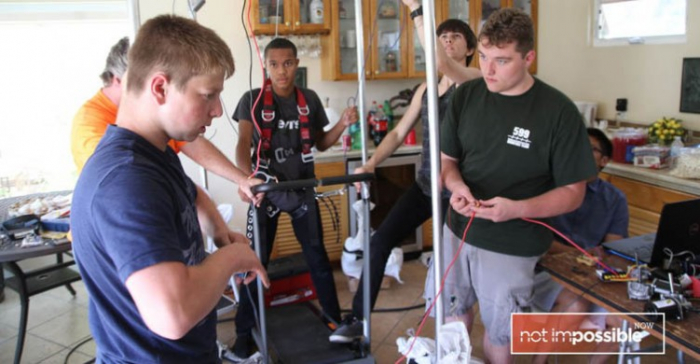Posted: September 30, 2014
Students in the robotics club at Granada Hills Charter High School spent their summer building a low-cost exoskeleton that would help children with Cerebral Palsy walk.
Exoskeletons for therapy can make a huge difference for children learning to walk: it cut the rehabilitation time from five years to one. However, these devices are expensive - ranging from $300,000 to $500,000. To produce an exoskeleton for a fraction of the cost, the students used cost efficient materials: 3D-printed parts, four motors, a treadmill, and a harness.
Joel Simonoff, who led the team, said, “We are incredibly excited because we have started to have the motors run simulated patterns. We are very excited to see that, even at full speed, the motor stops on a dime, and they are very accurate down to a few tenths of a degree.”
The team consisted of GHCHS students Joel Simonoff, Jake Mattinson, Sabir Muhammad, Travis Wight, Collin Taylor, Abhe Murthy, Adhikara Budhyhartono, Sidney Son, Ariana Levitt, and Adam Howitt.
This project was made possible thanks to Not Impossible Labs, an organization creating life-changing devices. Dylan Edwards and David Putrino, both PhD, PT of Burke Rehabilitation Center provided the students working feedback.






